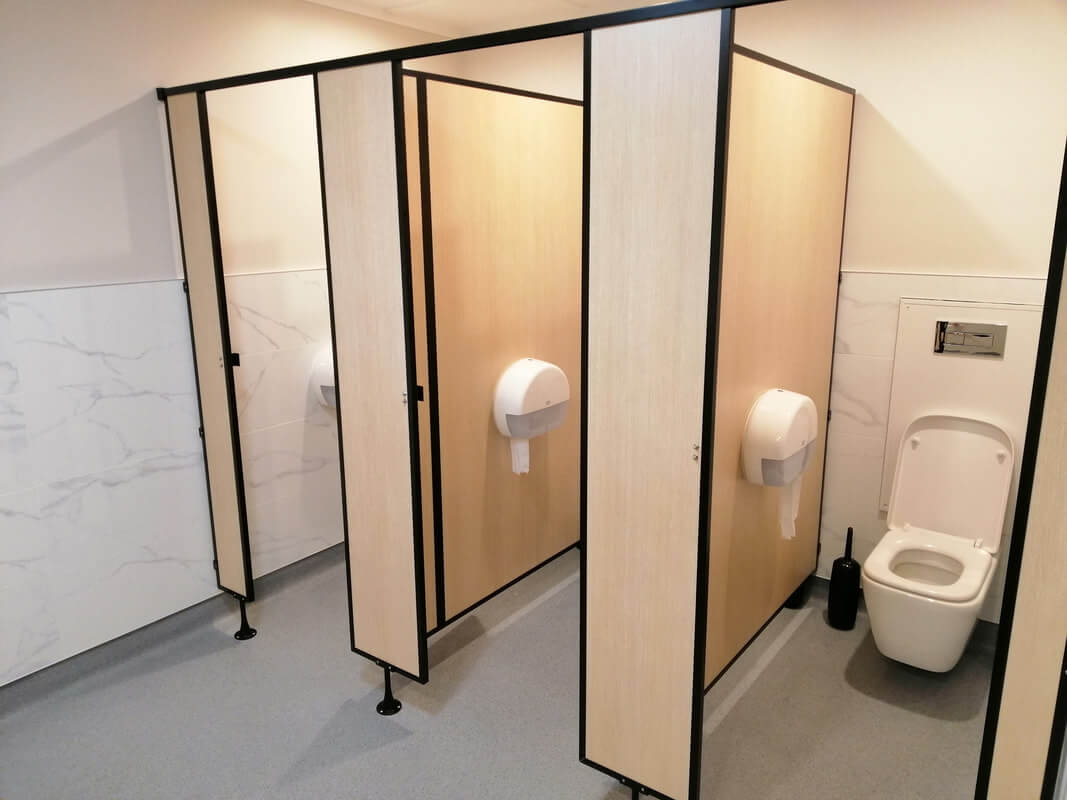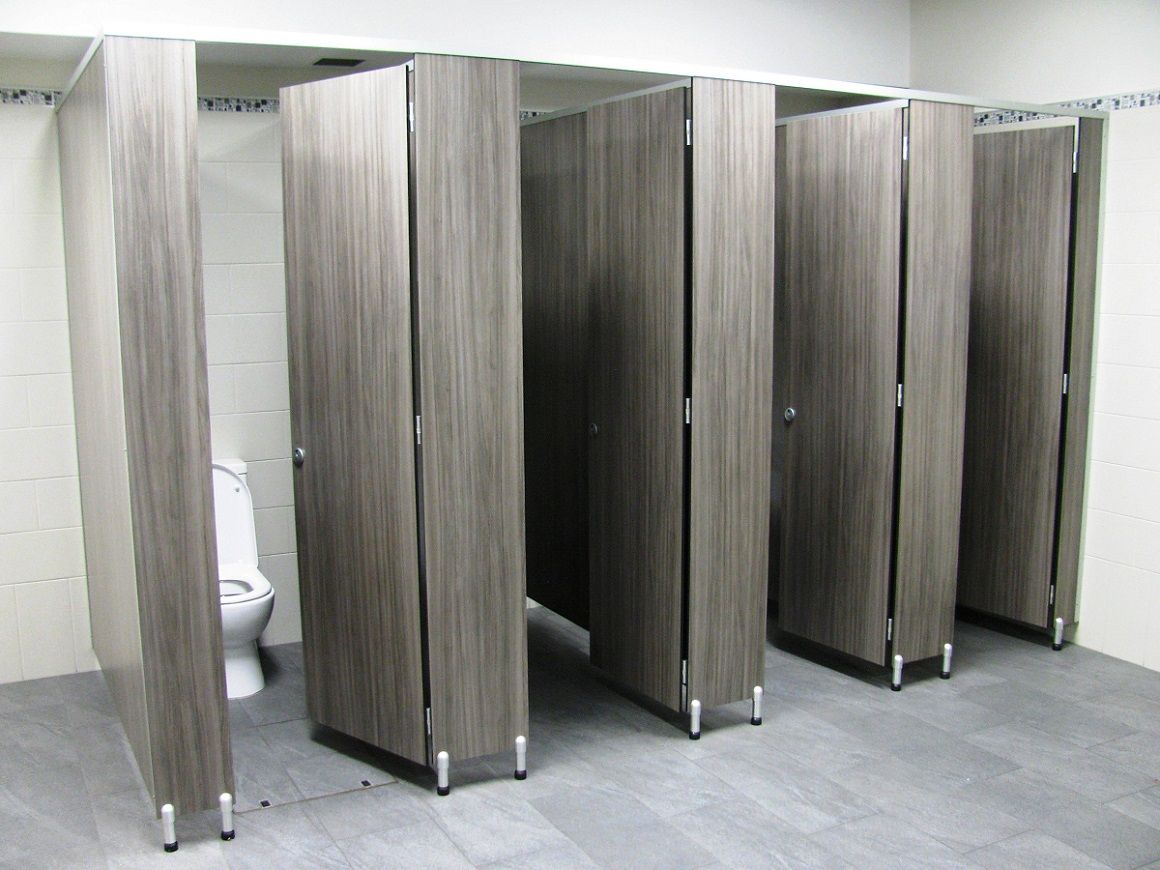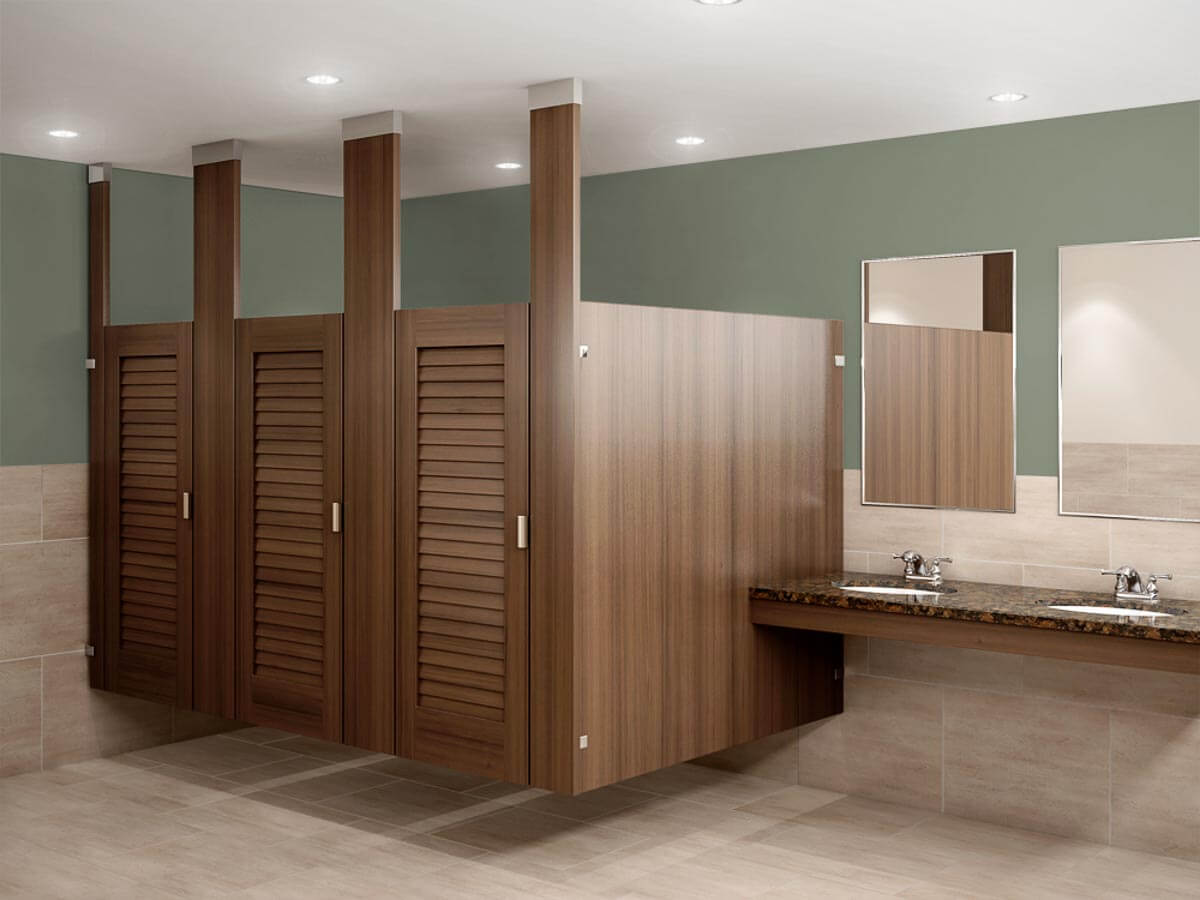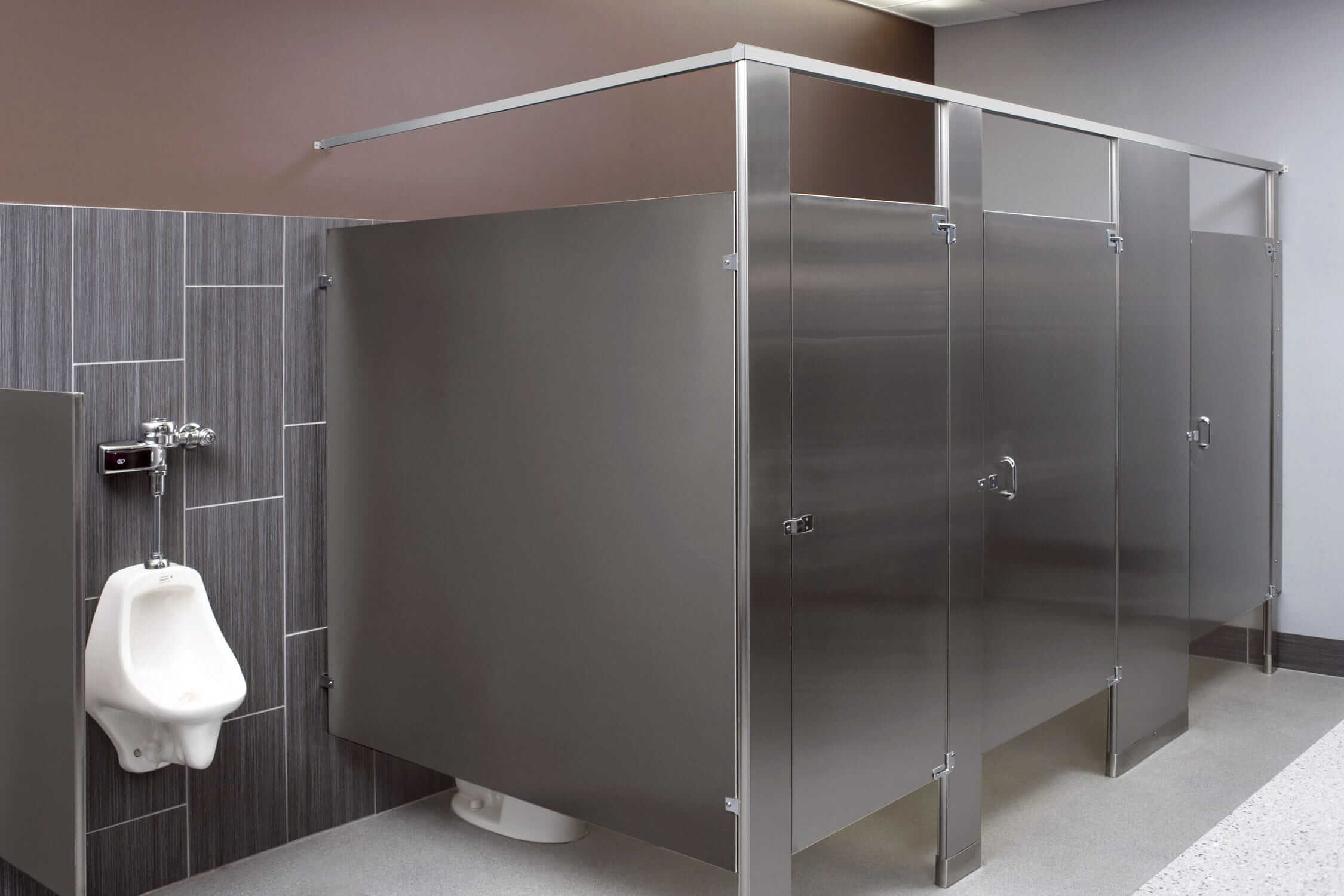Toilet partitions are often overlooked but are truly important in public restroom design and can make a huge difference in the overall aesthetics of a restroom. This article discusses the different types, configurations, and materials considered in choosing toilet partitions for your public toilet.

Toilet partitions are basically enclosures that surround toilets in public restrooms. They’re a public restroom staple that people tend to take for granted in terms of its contribution to a restroom’s design. But toilet partitions San Diego are pretty important, especially considering that they’re the only thing that provides restroom users privacy in an otherwise public setting.
In choosing toilet partitions when designing a public toilet, you have to consider the different types, layouts or configurations, and materials used to create these partitions. It’s important to know and differentiate among these choices as different combinations will work for different restroom situations.
Toilet Partitions San Diego: A Brief History
People haven’t always enjoyed the level of restroom convenience and privacy we do today. Public restrooms, in the olden days, were very much public. It wasn’t until the Industrial Revolution that partitions were developed.
We’ve come a long way since the flimsy wooden partitions of the past – those wouldn’t stand a chance against the wear and tear and vandalism that our current toilet partitions undergo. Partitions have evolved so much since then that they now have many different types, configurations, and makeup.
Types of Toilet Partitions
Although toilet partitions are a staple in public restrooms, they don’t come in one form. In fact, there are a lot of different types. But the 3 most common types of toilet partitions are the standard partition, the European partition, and the single use-room.
Standard

This type of toilet partition is one you can normally find in American establishments. This partition has a 12-inch gap at the bottom and a small gap at the edge of the door, allowing for a sightline.
European

By the name alone, you can tell that these partitions are the ones found in European establishments. Compared to the standard toilet partitions, these ones are more private and enclosed.
The bottom of this partition features a much smaller gap compared to the standard partition. There aren’t any sightlines, either. Some European toilet partition models connect to the ceiling, making the toilet enclosure resemble a small room.
Single-use Room

This toilet partition type provides users the most privacy because they’re basically one-toilet restrooms – rooms that only allow one toilet user at a time. You don’t share the restroom with other people at all.
Of course, as completely enclosed rooms, there are no gaps or sightlines.
Configurations of Toilet Partitions
The configuration or layout of toilet partitions would depend on the traffic the restroom expects to receive. Smaller establishments naturally have smaller space for restrooms and would, at average, have at most 3 toilet stalls: 2 standard stalls and 1 handicap stall.

The different toilet partition configurations include:
Standard
The standard configuration is the most basic of all – it’s the most common configuration of toilet partitions/stalls.
Handicap
Handicap stalls are also known as ADA stalls. They’re larger than standard stalls as they allow more space of wheelchair users to navigate inside.
These stalls are a requirement in all restrooms in the United States.
Between Walls
This stall is literally configured in between two walls. The layout may be done this way to accommodate plumbing equipment/supplies.
In-Corner
Toilet partitions can be set in the corners of public restrooms. This may be done to maximize space or just to once again accommodate plumbing equipment and supplies.
The Makeup of Toilet Partitions
Compared to the materials used to make toilet partitions of the past, the materials used now are usually waterproof, more durable, and sustainable – mostly to withstand the beatings they normally take from vandals.

The best materials to use for toilet partitions are as follows:
Powder Coated Steel
A toilet partition made from powder-coated steel will give you a rust-free and anti-fade finish. True to its name, it gives off a powder-like finish. This is achieved through the process of electrostatic coating – a process that uses charged particles to paint the partition.
The best thing about them is that these partitions usually sell for cheap. So you get functional partitions with a good finish without having to break the bank.
Plastic Laminate
This toilet partition material is the most affordable one. However, they aren’t recommended for public restrooms that are near the ocean or other bodies of water. They also aren’t recommended for use in high-moisture areas like showers and locker rooms.
Plastic laminate toilet partitions are durable and economical. They’re also pretty sanitary as dirt, grease, and even cosmetics won’t penetrate its laminated surface – you don’t have to worry about these being absorbed into your partitions.
Solid Plastic
Solid plastic or HDPE is among the pricier material options. However, they would be worth the investment if your public restroom is for a high-moisture area. This is because this material is non-porous. This means that moisture will not be absorbed into and damage your partitions.
This material does not only not absorb odor, but it also never peels and molds.
Stainless Steel
Stainless steel toilet partitions are definitely pricier than other materials and for good reason! They don’t only look good, they allow for easier cleaning as well. They’re damage resistant, too. So this material is a good investment if you’re building your public restroom in an area where vandalism is commonplace and you expect your stalls to take a beating.
Phenolic
Phenolic toilet partitions are made out of layers of Kraft paper put under intense pressure to be infused with resin.
Like stainless steel partitions, these ones also cost a pretty penny. This is because they’re not only strong and durable, they’re also lightweight.
Like solid plastic partitions, they are also water and moisture-proof, making them perfect for high-moisture areas and areas near bodies of water.
Explore More

